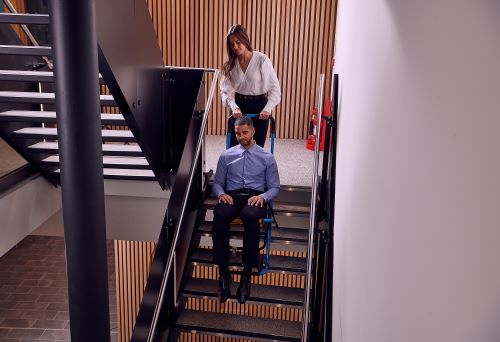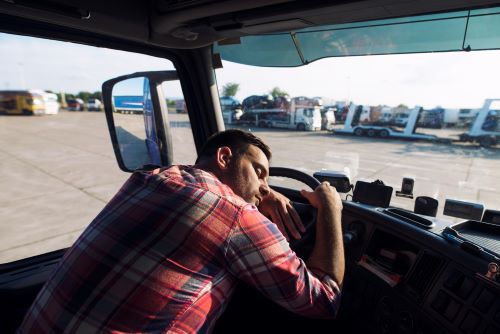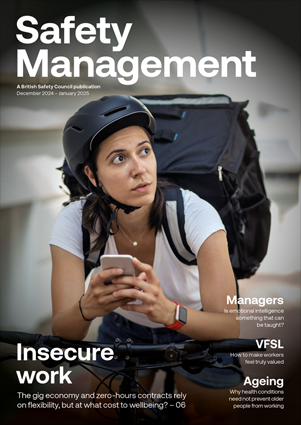Utility workers out in the field maintaining our electrical and gas supply networks can be at risk of accidents and aggression from the public, making it vital to have the right technology for raising the alarm and identifying their location.
Features
Keeping utility workers safe: alarm monitoring technology is key
Electrical technicians, gas engineers and ground workers are out in the middle of nowhere, or in people’s homes as they carry out their essential work; often alone. Lone working itself carries a greater risk, but what are the specific hazards posed by this type of work, and how can technology reduce the dangers?
Teams employed by utility companies might be working in a plant room, frequently driving to another site, working in someone’s home, or out in a remote part of the countryside. Their work touches on all three risk factors of lone working – people, environment and task-related.
When talking to a gas engineer recently, he told me about the threat of aggression he and his colleagues face every week as they complete necessary checks on household boilers.
Entering someone’s home environment puts a worker at a greater risk of violence and aggression, firstly, because they don’t know this person, and secondly because they are in an enclosed environment with a stranger with no one else around. But in the context of working for a utility company, this risk is exacerbated by negative associations with the employing company.

Rebecca Pick is Founder and CEO of Pick Protection.
News of soaring profits and forcefully fitted pre-paid meters amid a cost-of-living crisis are doing nothing to help this image, and those feeling under greater pressure and angry about issues like rising bills are more likely to take this out on a representative of the industry who’s in their home, especially if they’re alone.
Outside customer properties, the high visibility clothing designed to keep utility workers safe can also make them a target for aggression channelled at perceived ‘authority figures’. Those who face prolonged and disrupted journeys due to roads being excavated for utility works like gas pipe and electrical cable repairs may also resort to verbal abuse and aggressive behaviour – again targeting the workers who are accessible to them at the roadside.
Environmental and task-related risks
Two-thirds of typical utility company workers are field-based, and whether tracing cables or repairing electrical lines, they’re exposed to whatever the elements throw at them. Wet weather can lead to slippery surfaces, while the winter season can bring the dangers of cold stress (which can lead to serious conditions like hypothermia) if workers are not fully prepared.
Out in remote areas, there is also uneven ground to contend with, while isolated environments on the whole present a potential issue with what isn’t there – phone reception. While it’s estimated that 92 per cent of the UK area has 4G mobile coverage, workers in the telecoms arena in particular are actively looking for, and working in, communication blackspots.
Working with sewage presents a biological hazard which can lead to serious illnesses, but that’s not the only danger facing workers in water and wastewater roles. They may frequently be working in confined spaces with lower oxygen levels and flammable gases.
Being struck by a moving vehicle was the second most common cause of workplace deaths in the year 2021/22 after falls, while nine people were killed after coming into contact with electricity.
The work of a utility operative brings them into daily contact with risks including working at height, with electricity, around moving parts and hazardous substances. Even the everyday activity of driving from one location to another on the job can result in an accident.
Additional health-related risks: fatigue and stress
Given that utility workers have plenty of hazards to contend with, the ability to maintain focus is vital for their safety. But stress, lack of sleep and overexertion can all negatively impact concentration levels, which is where mistakes can be made.
A 2022 survey from trade union Prospect showed that in the electricity sector in particular, 90 per cent of respondents felt staffing levels were too low for safe working. Elsewhere, in the distribution network, one in three reported working 50 hours a week or more.
Sleep deprivation can lead to slower reaction times, impaired judgement and difficulty taking in new information – all of which can have dire consequences considering the tasks involved during a day’s work in the utility field. In the longer term, the risk of cardiovascular death in workers with high blood pressure is trebled if they are suffering from poor sleep and stress at work.
How to protect against the risks
The practical steps required to protect workers against these risks involve a multi-faceted approach, and should involve consulting the workers themselves in order to get an accurate and up-to-date picture of the hazards they face.
Before putting health and safety measures in place, an employer needs to understand the challenges. There are those which are obvious, such as the risk of electrocution and working near water, and these should already have been identified and controlled in a risk assessment. But other indirect factors can have an impact on workers’ health and safety.
For example, do daily work targets factor in the impact of bad weather, or are workers rushing around in wet weather, and taking normal-length breaks when they should be allowing more time to warm up or cool down?
Is there an open culture in the organisation which encourages discussion among the entire workforce about health conditions, either physical or mental, which will affect a worker’s ability to do a particular task?
Has a dynamic risk assessment picked up on an increase in aggression towards engineers, and are they trained to manage this?
Introducing technology into risk control measures
A study conducted by The Future of Field Operations Vision stated that by 2023, 97 per cent of organisations would look to expand the use of mobile technology across their entire operations.
This makes a lot of sense, as there is familiarity and confidence in using tech that people interact with every day, to improve efficiencies and bolster safety measures.
And so we come to the first control measure for ensuring the safety of lone or remote workers, like utility field staff, which hinges on a mobile phone’s primary function.
Communicating for safety
Communication is a number one priority in ensuring the safety of utility workers, especially if they’re working alone. Using platforms such as WhatsApp is better than radio silence from colleagues, but its coverage is limited, and as issues in 2022 showed, it’s susceptible to downtime.
Apps designed specifically for lone workers are a far superior option for not only raising an alarm, but noting problems earlier on, and providing the worker’s location. While they might be hosted on
a smartphone, lone worker app capabilities go far beyond the array of messaging apps and call functions we use every day. They offer far better coverage in areas of low signal and come with features such as a ‘time at risk’, ‘pre-alert’, and ‘fall detection’ (or ‘man down’).
These features allow workers to check in, set a time frame of when they’re going to be working in a higher-risk situation, let managers know where they are and if there is an issue which could spiral. For a utility worker, this might include the wind speeds increasing, posing the risk of being struck by a moving object, or falling from a height.
However, some areas will have no mobile phone signal at all, and in these circumstances, a satellite device would be necessary. These are particularly relevant to telecoms employees working out in the field and can open two-way messaging between the user and monitoring staff using satellites that are in line of sight.
It may also be necessary to use apps and devices that have the necessary protection and features to ensure they work when they required. For example, intrinsically safe phone covers can provide waterproof protection while blocking energy to prevent ignition – for example, when working in areas where flammable gases could be present.
Certain lone worker alarm devices, like a Bluetooth trigger or satellite devices, are often designed to withstand some of the harshest conditions. So, it’s best to check specifications if looking into lone worker products to make sure they meet the necessary requirements.
Using GPS
There are plenty of opportunities for a utility company to make efficiencies in their operations using tracking technology. But bad examples set by the likes of Amazon have left employees understandably very wary of any technology that reveals their location to their managers.
There is no getting away from the fact that GPS has a vital part to play in ensuring that, when necessary, workers get the help they need, fast. Standalone devices like ‘pebble’ alarms (a common compact device with a prominent SOS button) and satellite devices have in-built GPS capability, whereas this already exists within the smartphone for an app.
Lone worker apps make the most of this technology, updating monitoring operatives on workers’ precise locations, so they know where to send assistance.
One way to address tracking mistrust is to have a formal policy that reassures workers the information will only be used to ensure their safety, and if it is used in other ways (such as for monitoring movements or task completion time), it will be the manager who faces disciplinary action.
Some apps offer tracking, whereas others only locate a worker when necessary for their safety,
so this is something to think about if there is resistance from workers to the use of GPS in lone worker alarm and location identification devices.
Keeping the conversation going
In high risk-roles, a dynamic risk assessment is key to ensuring the safety of lone and remote workers as issues arise from day-to-day or task-to-task, and this relies on frequent feedback from the team who regularly undertake hazardous work activities.
Keeping the conversation going and encouraging workers to raise any concerns and questions they have in a supportive environment means that you can prepare for risks that you hadn’t previously accounted for – for example, while staff are out in the field. Information such as this can inform protocols on a user profile, which are available for operatives at the alarm receiving centre, providing valuable context for any alarms in the future.
In some circumstances, an employer will have a lone-worker monitoring and alarm solution in place, but usage of the technology is low. By regularly speaking to staff about the benefits of and challenges arising from using the technology, it should be possible to identify why take-up is low. This can then be addressed during training (for example, explaining how to use the technology) and through usage policies that remind workers of their responsibility to look after their own safety – including by using any lone worker alarm and monitoring systems provided.
When deciding on the most appropriate lone worker monitoring and alarm technology for the company’s needs, it is essential to check the provider offers the ability to test their products and platforms. By doing so, the employer and their team will be able to check if it’s the right solution for the organisation and their employees who require protection out in the field.
What happens when someone raises an SOS?
Pressing the SOS on an app or device connects the call through to an alarm receiving centre (ARC) where the operator picks up the call. Along with the SOS, the ARC will also receive a GPS location and any information provided by the user, such as health conditions.
The operator will listen to background noise, conversation or that person’s documented duress word if the person isn’t able to respond fully.
The operator will then go through a set of protocols which have been previously agreed and recorded for that person. This might include contacting their manager, their place of work or the emergency services. If the ARC is BS 8484 accredited, the operator will be able to facilitate a Level 1 priority police response if required.
In the meantime, the operator would continue to engage with the person who raised the SOS and relay information to the contact or emergency services. They can provide any valuable information from pre-alerts and coordinates to emergency services, so they can get to the right location and be forewarned of the circumstances.
Functions to look for in a lone worker app or device
SOS – a clear, visible button that sends an alarm with just one press.
Fall detection – an in-app/device algorithm which picks up if someone has fallen and sends an alarm unless cancelled. Ideally, this can be enabled or disabled by the user, with adjustable sensitivity levels to reduce false alarms.
Time at risk – an extendable recorded time frame to indicate periods of higher-risk tasks and activity, with a one touch button to check in and confirm safety.
Pre-alert – a way of providing context and essential information to operatives in case a situation escalates, such as ‘not feeling well’, ‘weather deteriorating’ or details around a location if working in a building with lots of levels, for example.
Rebecca Pick is Founder and CEO of Pick Protection. For more information see:
pickprotection.com
References
1. The Future of Field Operations Vision Study, Zebra; bit.ly/41ykuDr
2. Research briefing: Building broadband and mobile infrastructure, House of Commons Library, December 2002; bit.ly/40A0IpW
3. Prospect Union’s Energy Workforce Survey, April 2022; bit.ly/3L3YfOP
FEATURES

Emergency evacuation for people with mobility issues: why we must do better
By Gerard Wallace, Evac+Chair International on 01 August 2023
With research revealing poor understanding among many businesses of their duty to have arrangements in place to safely evacuate mobility-impaired people, it’s time for the government to educate building owners about their obligations and mandate the provision of evacuation equipment, to ensure a safe evacuation for everyone.

Establishing a company culture of safety
By Driving for Better Business on 01 November 2024
Collision prevention takes growth mindsets, psychological safety and a ‘just’ culture, delegates at the recent National Highways ‘Driving Change’ conference heard.

Driver fatigue: always minimise the risk
By Driving for Better Business on 01 November 2024
Research shows that driver fatigue may be a contributory factor in up to 20 per cent of road incidents, and up to one-quarter of fatal and serious incidents.



